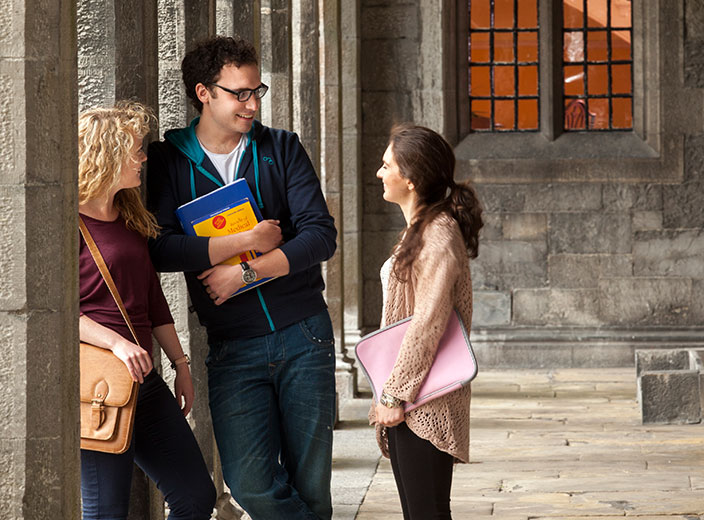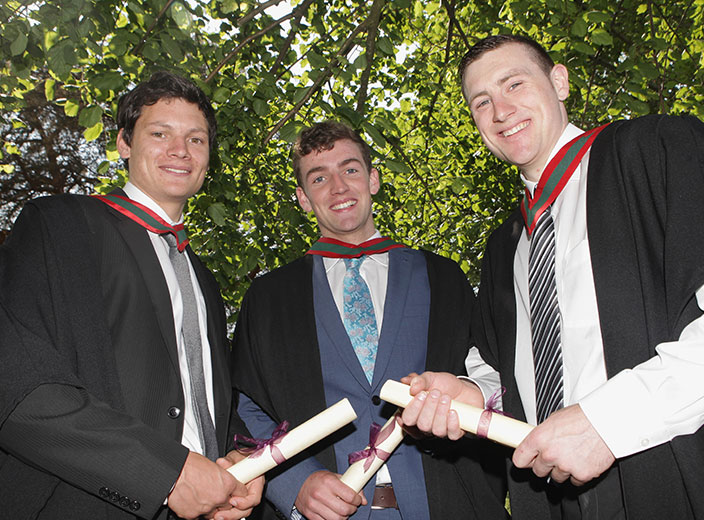-
Courses

Courses
Choosing a course is one of the most important decisions you'll ever make! View our courses and see what our students and lecturers have to say about the courses you are interested in at the links below.
-
University Life

University Life
Each year more than 4,000 choose University of Galway as their University of choice. Find out what life at University of Galway is all about here.
-
About University of Galway

About University of Galway
Since 1845, University of Galway has been sharing the highest quality teaching and research with Ireland and the world. Find out what makes our University so special – from our distinguished history to the latest news and campus developments.
-
Colleges & Schools

Colleges & Schools
University of Galway has earned international recognition as a research-led university with a commitment to top quality teaching across a range of key areas of expertise.
-
Research & Innovation

Research & Innovation
University of Galway’s vibrant research community take on some of the most pressing challenges of our times.
-
Business & Industry

Guiding Breakthrough Research at University of Galway
We explore and facilitate commercial opportunities for the research community at University of Galway, as well as facilitating industry partnership.
-
Alumni & Friends

Alumni & Friends
There are 128,000 University of Galway alumni worldwide. Stay connected to your alumni community! Join our social networks and update your details online.
-
Community Engagement

Community Engagement
At University of Galway, we believe that the best learning takes place when you apply what you learn in a real world context. That's why many of our courses include work placements or community projects.
About Us
About Us
Mission Statement
“We aim to maintain the importance of understanding the structure of the living body at all levels of complexity.
For students who will be tasked with patient care, we aim to place Anatomy at the forefront of clinical medical, nursing and therapeutic practice, thereby enhancing the quality and efficiency of healthcare. We aim to deliver factual content relevant to, and appropriate for, each of the student groups that we teach whilst promoting the integration of modern medical imaging within Anatomy teaching.
For students who will be tasked with scientific discovery, we aim to teach within a research-led environment, providing students with a solid knowledge of modern anatomy. Research is regarded as a vital component of our mission, therefore instruction and training in practical biomedical imaging will be given to support learning in our research strands. In order to promote scientific communication, students will be supported as they develop oral, written, numerical, visual, presentation and collaborative skills.”
What is Anatomy?
Anatomy is a field of study with a very long and rich history, Anatomy comes from the Greek ἀνατομία which means ‘to cut up’. It is the specialised study of the structure of the human body from the whole body level down to the subcellular level, and everything in-between. Anatomy is a very broad field and includes the studies of how modern humans evolved, how we develop from before conception through to old age, and ways to investigate the structures that make us who we are. Students who study Anatomy broadly fall into two groups: those that must study Anatomy as part of their degree, and those that choose to study Anatomy.
Those that must study Anatomy are students in degrees that lead to careers in healthcare and allied professions, from medicine and nursing to therapists and biomedical engineers. Those that choose to study Anatomy are science students who are interested in anatomical research or simply who wish to know and understand the human body in more depth.
What do Anatomists Do?
Anatomists study the bodies of humans and other animals – during and after life - in order to make contributions to scientific and medical knowledge. As scientists, our research provides a spatial and temporal framework through which modern physiological and molecular information can be fully interpreted. To do this we use a range of specialised techniques such as microscopy and medical imaging. As a science, Anatomy overlaps and is closely linked with many other branches of science.
What do our Graduates do?
Science graduates who have specialised in anatomy have found employment in many areas; those who wish to follow an academic or research career have undertaken further study at PhD level while some have chosen to study in order to work in teaching, physiotherapy, medicine and related careers. Due to the fact that graduates have experience in human anatomy, some have also spent time teaching anatomy as Demonstrators at University level immediately following graduation whilst they consider their long-term career plans.

















